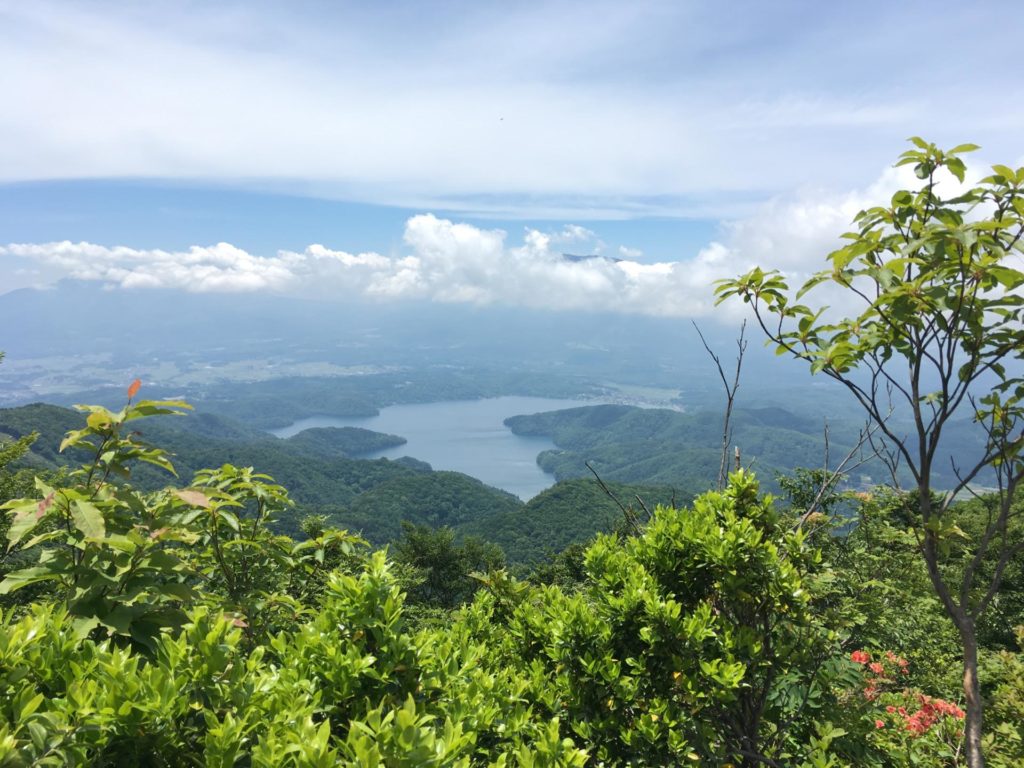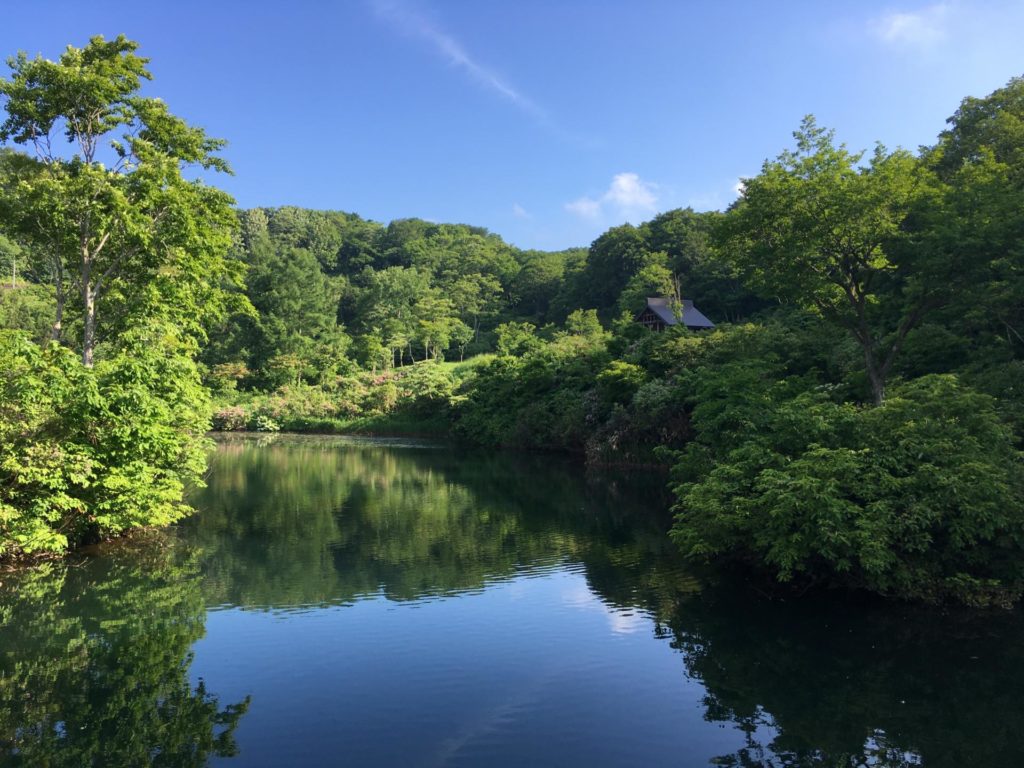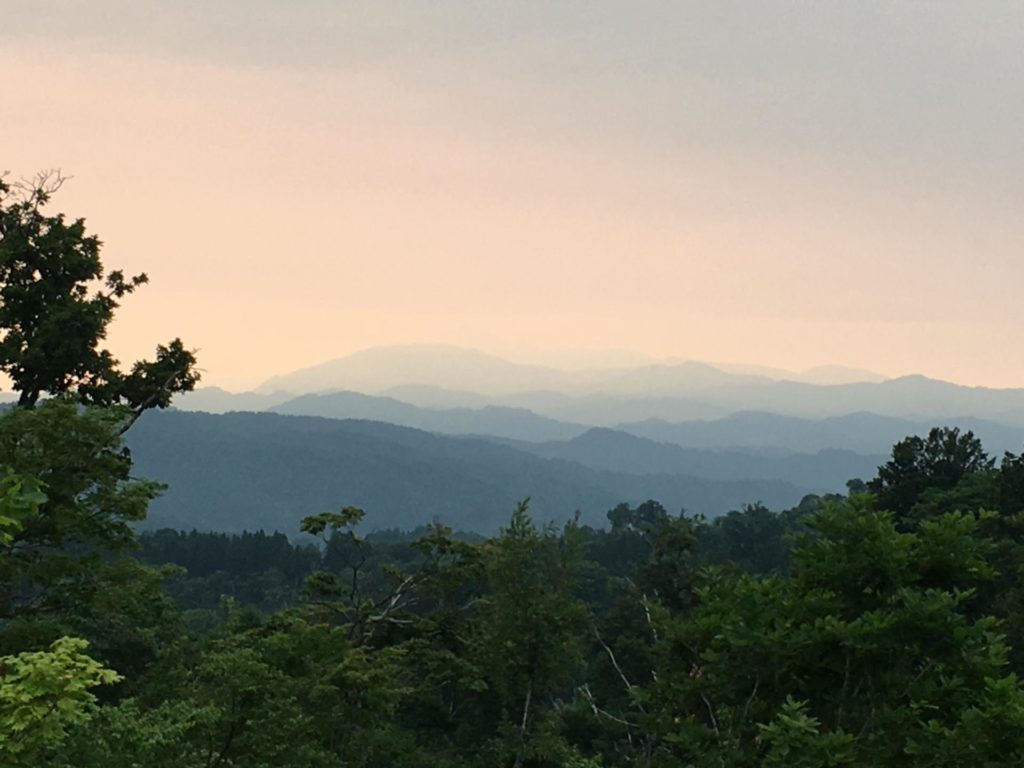Here in Japan, the Shinetsu Trail offers even beginner hikers the chance to get a taste of “thru-hiking” a designated trail from end-to-end.

The Shinetsu Trail is an 80-kilometer trail that stretches from Mt. Madarao to Mt. Amamizu along a ridge separating Nagano and Niigata prefectures. Modeled after the Appalachian Trail in the United States, it’s one of the rare “long trails” in Japan designed for multi-day trekking and not peak-bagging. There are no fancy mountain huts along the trail and not a lot of elevation (the tallest peak is Mt. Madarao at 1,382 meters) or elevation change. Instead, the mellow, well-maintained trail takes you through beautiful beech and cedar forests and crosses many historic mountain passes.
To make completing a thru-hike of the trail accessible to more people, local minshuku in the ski towns of Madarao and Togari Onsen provide accommodation for hikers on the Shinetsu Trail and can shuttle you to and from the appropriate trailheads each day. For those looking for a more traditional long trail experience, there are six designated tent sites along the trail as well.
Because I was using the Shinetsu Trail as a practice hike for my John Muir Trail thru-hike attempt this autumn, I planned the hike as a five-day, four-night tent camping trip.
In late June, my hiking partner Genna Rowe and I took the Hokuriku Shinkansen from Tokyo to Iiyama Station and caught a taxi to the Chiroru trailhead near the main lift ticket office for Madarao Kogen Ski Resort. After a steep climb directly up the ski slope to the summit of Mt. Madarao, we were officially on the Shinetsu Trail.
The first day of the hike covered Madarao Kogen, which offers views of Mt. Myoko and Lake Nojiri, and takes you through beech forests and alpine marshes. The first tent site on the trail is at idyllic Akaike Pond. We spent our first night on the trail there. Completely sheltered from light pollution, the stars were extremely bright and appearing to hang low above our campsite.
The next day, we needed to hike more than twenty kilometers (12.4 miles) to the next designated campsite. Neither of us had ever hiked that far before in one day, so we were a bit intimidated. Fortunately, the trail predominately followed an old trading route graded for horses and ox carts, so it was easy walking.
Just past Tomikura Gap, the trail opened up to sweeping views of the Iiyama Valley. It was here that famed warlord Uesugi Kenshin, daimyo of Echigo Province (present day Niigata), set up camp to battle his rival, Takeda Shingen, who had conquered Shinshu (present day Nagano) during the Sengoku Period (1467-1603), known as the Age of Warring States. Unfortunately, that meant we had little or no shade on a hot, sunny day. We were grateful that our second campsite was also next to a beautiful pond (Katsura Ike) and we promptly jumped in for a brief swim to cool off.

Our third day on the trail was the first time I’d really hiked in the rain. My rain jacket wetted out almost immediately and turned into a sauna suit. The first 3.5 km. of the trail after Katsura Ike was a tough uphill climb to the top of Togari Onsen Ski Resort where we took shelter under one of the ski lifts. After the rain stopped, we were on a narrow knife ridge still windy from the storm. The clouds lifted first on the Nagano side, Chikuma River shining in the valley below, and then, on the Niigata side, with a clear view all the way to Naoetsu Port on the Sea of Japan. The dramatic views of the retreating storm clouds, verdant green valleys and the deep blue Sea of Japan made me thankful it had rained.
As we walked north, despite decreasing elevation, we seemed to be walking back into springtime, and on the fourth day we began to see small snow patches still melting into ponds, teaming with frog eggs and other larvae. While the Asian skunk cabbage (the unfortunate English name of the beautiful Mizubasho) was still beautifully blooming at Nonomi Ike when we camped there, recent snowmelt meant we were attacked by swarms of biting flies.
On the last day of our hike the incessant flies necessitated learning to break camp really quickly. We didn’t even have time to make coffee, so we took a coffee break at a sunny clearing overlooking Niigata where the trail hooks 90 degrees to the right. Later, we found out that our choice of coffee break spot is the northernmost point of Nagano Prefecture. Unable to stop hiking for long without being bitten, we reached the top of Mt. Amamizu, the official endpoint of the Shinetsu Trail, earlier than planned at only 10 a.m. Following the hike, we chilled at Daigonji Farm Campground, cured our itchy fly bites at Matsunoyama Onsen, one of the “Three Famous Medicated Onsen” in Japan and eventually returned to Tokyo via Echigo-Yuzawa Station.
The Shinetsu Trail is refreshingly undeveloped. We had each campsite to ourselves. The trail crosses numerous roads and civilization is not far away, but for the entire 80 kilometers there are no visitor centers, shops or other manned infrastructure. After a couple days, we really had the feeling of being on trail. It’s a great trail for a beginner long-distance trek. If you are looking for a fall hike, the prime season for hiking the Shinetsu Trail must be autumn. There were so many varieties of Japanese maple lining the trail that it must amazing to experience during peak season.
More information about the Shinestu Trail can be found at the Shinetsu Trail Club website.

Tina Shang is a recovering lawyer who has given up climbing the corporate ladder for pursuing her passion of ascending mountains in Japan, Taiwan and overseas. She’s currently dragging her backpack along the John Muir Trail, which she hopes to complete before the snow ies this fall in the Range of Light. This winter, you’ll find her in Nozawa Onsen where she works at The Schneider Hotel when not riding powder.





